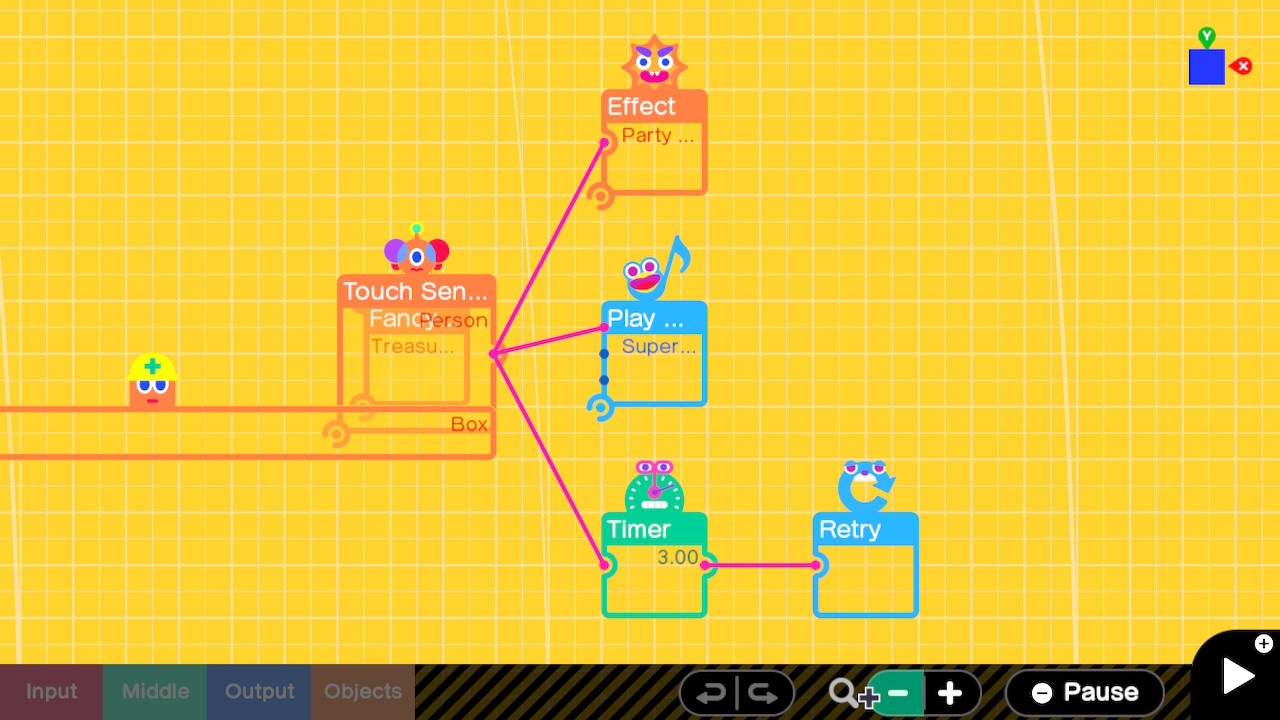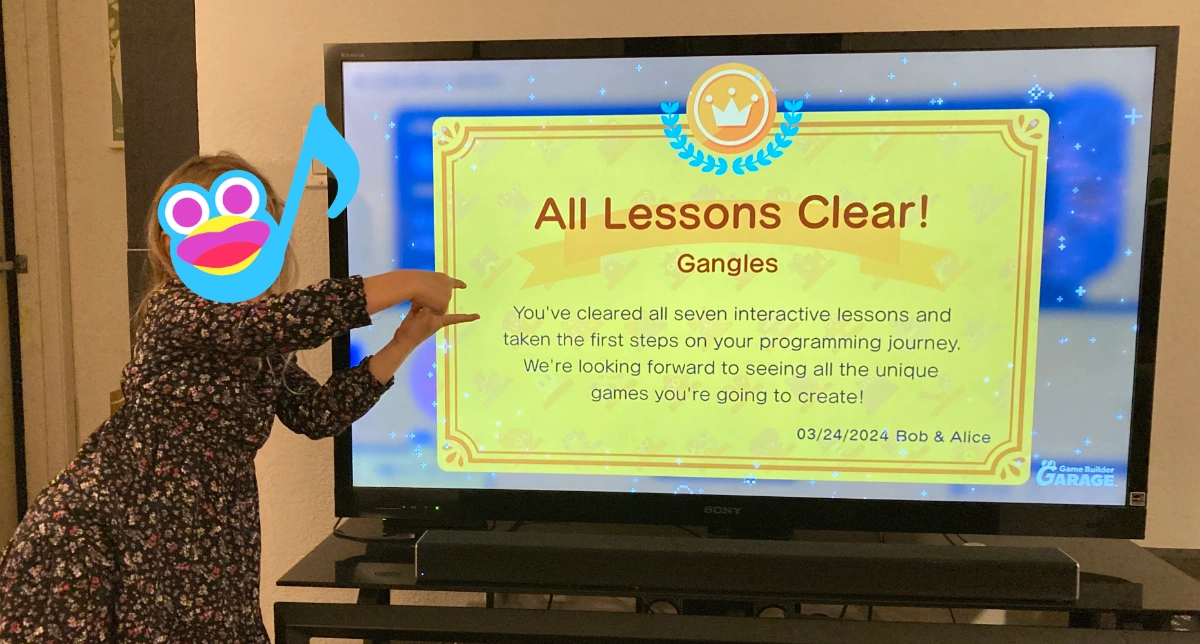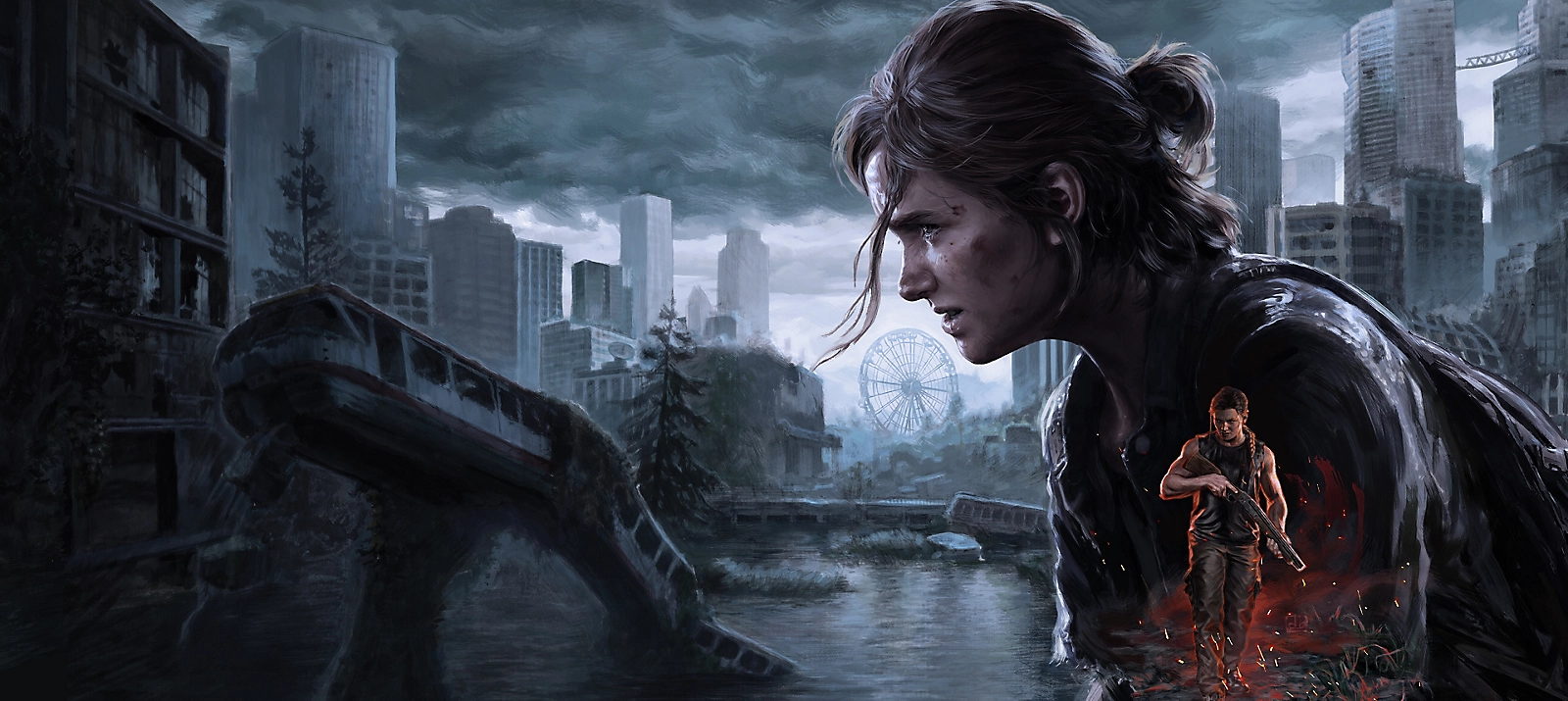
My daughter (age 6) is aware that her daddy makes video games, though with somewhat abstract notions of what that actually entails. She has often asked if we could make a game together, which led me to research various child-friendly gamedev tools. On a whim I picked up Game Builder Garage, a game-making toolkit released for the Switch in 2021. I hadn’t heard much about it since its release, but generally trusted Nintendo’s ability to appeal to young children.
I had every expectation that this experiment would fail. My kid enjoys playing games, but making games can be slow and tedious. Nintendo’s website says the game is designed for children “as young as first year elementary students”, which is slightly beyond her. She is still in the early stages of learning to read, so we always played together; she held the controller and I narrated the lessons.
Game Builder Garage uses a visual programming language based on placing and connecting “nodons”. There are various types of nodons for inputs, calculations, outputs, and object spawners. Each nodon is also given a little personality, with a unique cartoon avatar, audio FX, and quirky dialogue in the interactive tutorials. This is a great help in making abstract gamedev concepts more memorable.

The tutorials are well designed, slowly easing the player into new concepts and frequently switching back to “game view” to let the player test out their iterative changes. They’re tightly constrained experiences: the player can only do the “right thing” in every step and the lesson doesn’t advance until they do. The exception is the final step, where the player is given a limited opportunity for customization (selecting colours, adjusting music, etc.)
This format worked perfectly for my daughter. Each step was simple for her to follow and it was impossible to get the lesson into a bad state. If any part required math concepts that were beyond her (multiplication, negative numbers, cartesian coordinates), she could still advance the lesson by heedlessly following the simple instructions for nodon placement. It gave her confidence and pride to create full games with minimal parental assistance.
The seven interactive lessons covered multiple game genres in increasing complexity: a simple 2D platformer, a top-down ball roller, a side-scrolling shooter, a 3D puzzle room, a racing game, and culminating in a complex 3D platformer. It all felt like a vastly improved version of my own serendipitous childhood discovery of game making, attempting crude versions of every genre in the StarCraft campaign editor or on a TI-83+ graphing calculator.

This last weekend my daughter proudly finished the final interactive lesson, and I was curious if the appeal of Game Builder Garage would hold up when presented with a blank canvas. I was delighted to watch her confidently assemble new games from scratch, though so far mostly platformers and hewing closely to the concepts and structures taught in the lessons. Her biggest difficulty has been debugging when things aren’t right, but thankfully I’m able to assist with that.
It’s been fun to see gamedev concepts influence her thinking in small ways. Watching me play a PC game, she asked: is this game also made with nodons? She was very impressed when I told her that, basically, it was! She also, unprompted, made the following comparison (quoting a text message):
In the car [daughter] was asking about the airbags in the car. She asked how the car knows to pop them out. I said the force of the crash. She goes “oh so it’s like a touch nodon is in the front of the car that sends a signal to the airbag pop nodon”.
I’ve been evangelizing Game Builder Garage to all the other parents I know. It’s truly a terrific way to introduce programming and gamedev concepts to young children. My kid had a blast with it, and I’m grateful to get to share game making with her as a creative medium and hobby.










